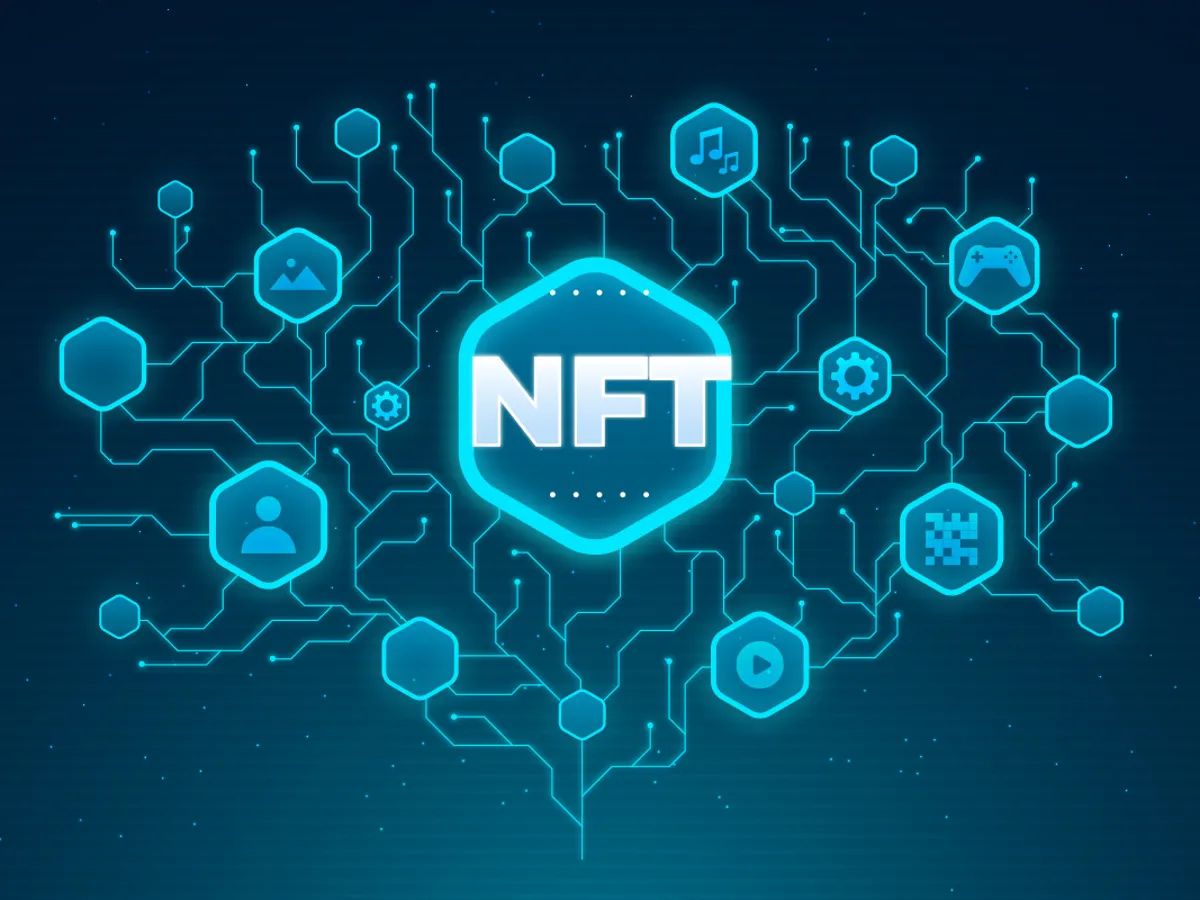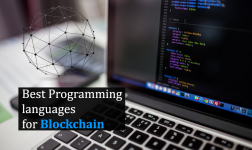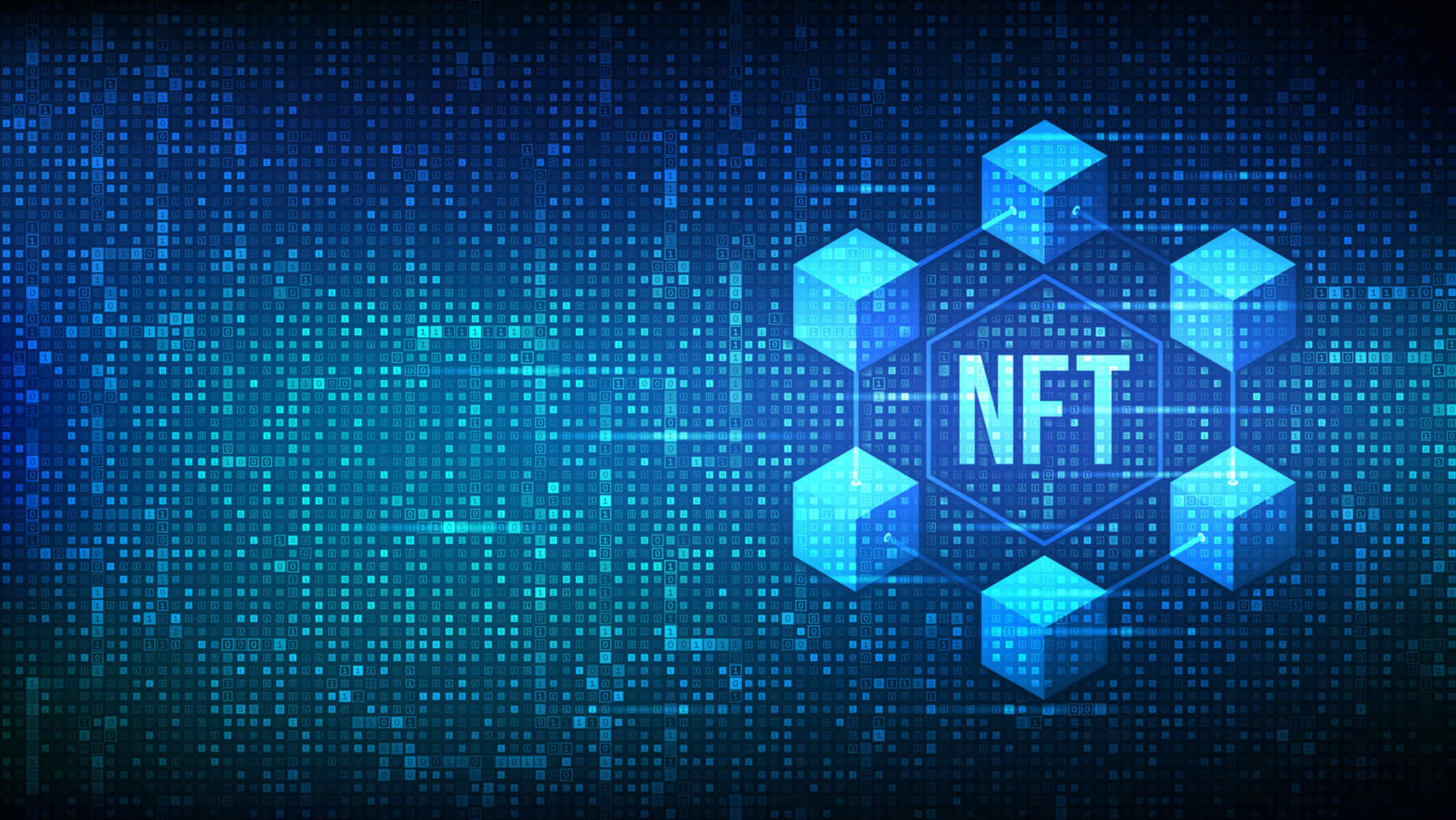Introduction
In today’s digital age, blockchain technology has emerged as a revolutionary concept that is transforming various industries, from finance to supply chain management. As a developer, acquiring the skills to code blockchain applications is becoming increasingly valuable and in-demand. Whether you’re a seasoned programmer or just starting your coding journey, learning blockchain coding can open up incredible opportunities for you in the tech world.
Blockchain is essentially a decentralized and distributed ledger that securely records transactions across multiple computers or nodes. This technology eliminates the need for intermediaries and provides transparency and immutability, making it highly secure and tamper-resistant. It has gained popularity due to its application in cryptocurrencies like Bitcoin and Ethereum, but its potential goes far beyond digital currencies.
Learning blockchain coding allows you to build decentralized applications (DApps), smart contracts, and implement consensus algorithms to drive consensus among network participants. It requires a combination of programming skills, understanding of cryptography, algorithms, and knowledge of blockchain platforms and APIs.
In this comprehensive guide, we will explore the essential steps to learn blockchain coding. Whether you’re interested in developing your own blockchain-based projects or joining existing blockchain development teams, this guide will provide you with the roadmap to get started. We’ll cover everything from understanding blockchain technology to writing smart contracts and integrating with existing systems.
But before we dive into the technical aspects of blockchain coding, it’s crucial to have a solid understanding of the basics of cryptography. Cryptography plays a fundamental role in securing data and transactions on the blockchain, and understanding how it works will significantly enhance your ability to code blockchain applications.
Understanding Blockchain Technology
Before delving into blockchain coding, it is essential to grasp the fundamentals of blockchain technology. At its core, blockchain is a decentralized and distributed digital ledger that securely records transactions across multiple computers or nodes. Each transaction is stored in a block, which is linked to previous blocks in a chronological order, forming a chain of blocks. This structure ensures transparency, security, and immutability of the recorded data.
One of the key features of blockchain technology is decentralization. Unlike traditional centralized systems where a single entity has control over data storage and validation, blockchain is distributed among multiple nodes. Each node holds a copy of the entire blockchain, and transactions are validated through a consensus mechanism, ensuring trust and removing the need for intermediaries.
Transparency also plays a vital role in blockchain technology. Every transaction recorded on the blockchain is visible to all participants in the network. This transparency fosters trust and accountability, as it allows anyone to verify the authenticity and integrity of transactions.
Immutability is another crucial aspect of blockchain. Once a transaction is recorded and verified on the blockchain, it becomes virtually impossible to alter or delete it. This immutability is achieved through cryptographic techniques, ensuring that the integrity of the data remains intact.
Blockchain technology has gained significant popularity due to its application in cryptocurrencies such as Bitcoin and Ethereum. However, its potential extends beyond digital currencies. Industries like supply chain management, healthcare, finance, and even government sectors are exploring the use of blockchain to enhance transparency, security, and efficiency in their operations.
As a blockchain developer, understanding the underlying principles of blockchain technology is crucial. It enables you to design and develop decentralized applications (DApps) that leverage the benefits of blockchain, such as increasing trust, reducing costs, and improving data integrity.
In the next sections, we will explore the essential steps to start learning blockchain coding. From understanding the basics of cryptography to picking a programming language and setting up a development environment, we will lay the foundation for your journey into the exciting world of blockchain development.
Learning the Basics of Cryptography
Cryptography is an essential component of blockchain technology as it ensures the security and integrity of data stored on the blockchain. Before diving into blockchain coding, it is crucial to understand the basics of cryptography and the cryptographic algorithms used in blockchain systems.
Cryptography is the practice of securing information by transforming it into an unreadable format. It involves two main processes: encryption, which converts plain text into cipher text, and decryption, which converts cipher text back into plain text. This process allows for secure communication and storage of sensitive data.
In the context of blockchain, cryptography is used for various purposes, such as ensuring the privacy and confidentiality of transactions, verifying the authenticity of digital signatures, and creating secure hash functions.
To begin learning cryptography, it is essential to familiarize yourself with the types of cryptographic algorithms commonly used in blockchain technology. Some common algorithms include:
- Symmetric Key Encryption: This algorithm uses a single key to both encrypt and decrypt data. Examples of symmetric key encryption algorithms include Advanced Encryption Standard (AES) and Data Encryption Standard (DES).
- Asymmetric Key Encryption: This algorithm uses a pair of keys – a public key for encryption and a private key for decryption. Asymmetric key encryption algorithms include Rivest-Shamir-Adleman (RSA) and Elliptic Curve Cryptography (ECC).
- Hash Functions: These algorithms convert variable-length data into fixed-length hash values. Examples of hash functions commonly used in blockchain technology include SHA-256 and Keccak.
Understanding the concepts of encryption, decryption, digital signatures, and hash functions will provide a solid foundation for your blockchain coding journey. Additionally, familiarize yourself with concepts like public-private key pairs, key management, and key exchange protocols.
There are numerous resources available online to learn cryptography, including books, tutorials, and online courses. It’s important to choose reputable sources and follow a structured learning path to gain a comprehensive understanding of cryptography principles and algorithms.
In the next section, we will discuss the importance of selecting a programming language for blockchain coding and explore some popular languages used in blockchain development.
Picking a Programming Language
After gaining a solid understanding of cryptography, the next step in learning blockchain coding is choosing a programming language. The programming language you choose will depend on the blockchain platform you plan to work with, as different platforms support different languages.
Solidity is one of the most popular languages for blockchain development. It is specifically designed for writing smart contracts on the Ethereum platform. Solidity is a statically-typed, contract-oriented language that is similar to JavaScript in terms of syntax. It is widely supported and has a vibrant developer community, making it a great choice for Ethereum-based blockchain projects.
If you are interested in developing applications for other blockchain platforms like Hyperledger Fabric or Corda, you may need to explore languages specific to those platforms. For example, Chaincode, the smart contract language for Hyperledger Fabric, is written in Go. Corda, on the other hand, supports Kotlin and Java for developing smart contracts and applications.
Apart from platform-specific languages, there are also blockchain frameworks that allow you to code in popular languages like Python, Java, or C#. For instance, the NEO blockchain supports multiple languages, including C#, Python, and Java, making it more accessible for developers with different language preferences.
When picking a programming language for blockchain development, consider factors such as community support, available libraries and tools, ease of learning, and compatibility with your target blockchain platform. Additionally, look into the documentation, tutorials, and resources available for the language to support your learning journey.
It’s worth noting that learning one programming language for blockchain development will open the door to learning other languages more easily. The core concepts of blockchain, such as transactions, blocks, and smart contracts, are universal, and once you grasp them in one language, transitioning to another becomes smoother.
In the next section, we will discuss the importance of setting up a development environment for blockchain coding and explore the tools and frameworks available to help you get started.
Setting up a Development Environment
Once you have chosen a programming language for blockchain coding, the next step is to set up a development environment. A development environment consists of the necessary tools and software to write, compile, and test your blockchain applications. Here are some essential components to consider when setting up your development environment.
Text Editors or Integrated Development Environments (IDEs): Choose a text editor or IDE that supports the programming language you have selected. Popular options for blockchain developers include Visual Studio Code, Atom, and JetBrains IDEs like IntelliJ IDEA and PyCharm. These editors provide syntax highlighting, code completion, and debugging features to streamline your development process.
Compiler or Interpreter: Depending on the programming language you are using, you might need to install a compiler or interpreter. For example, if you are developing smart contracts in Solidity for Ethereum, you will need to install the Solidity compiler (solc) to compile your code into bytecode that can be deployed on the Ethereum network.
Blockchain Platforms and Network: To test and deploy your blockchain applications, you will need to set up a local or test network. This can be done by downloading and installing specific blockchain platforms like Ganache for Ethereum or deploying a test network using tools like Truffle. These platforms and networks provide you with a simulated blockchain environment where you can deploy and test your applications without incurring any real-world costs.
Version Control: Use version control systems like Git to track and manage changes to your codebase. This allows you to collaborate with other developers, revert to previous versions if needed, and ensure a smooth development workflow.
Blockchain Development Tools: Depending on the blockchain platform and programming language you are using, there may be specific development tools and frameworks available. For example, Ethereum developers often use tools like Truffle and Remix to help with smart contract development and testing. These tools provide features like automated testing, contract deployment, and interactive debugging.
It’s important to follow the documentation and guides provided by your chosen programming language and blockchain platform to properly configure your development environment. Additionally, explore online tutorials, forums, and developer communities to gain insights and troubleshoot any issues that may arise during the setup process.
With your development environment set up, you’re now ready to start coding your blockchain applications. In the next section, we will explore the importance of familiarizing yourself with blockchain APIs and how they can be leveraged to interact with the blockchain network.
Familiarizing Yourself with Blockchain APIs
Blockchain APIs (Application Programming Interfaces) play a crucial role in interacting with the blockchain network and building applications on top of it. These APIs provide a set of functions and protocols that allow developers to access and manipulate data stored on the blockchain. Familiarizing yourself with blockchain APIs will enable you to integrate your applications with the blockchain network and leverage its features and capabilities.
The specific APIs you need to work with will depend on the blockchain platform you are using. Let’s take a look at some commonly used blockchain APIs:
- Ethereum Web3.js: This is the standard JavaScript library for interacting with the Ethereum blockchain. Web3.js provides a set of functions to connect to an Ethereum node, send transactions, and interact with smart contracts.
- Bitcoin Core API: The Bitcoin Core API allows developers to interact with the Bitcoin blockchain. It provides functions for managing wallet transactions, retrieving blockchain information, and generating new addresses.
- Hyperledger Fabric SDKs: Hyperledger Fabric offers SDKs (Software Development Kits) in multiple programming languages like Go, Java, and JavaScript. These SDKs provide APIs for interacting with the Fabric blockchain network, managing channels, and executing transactions.
- Corda RPC (Remote Procedure Call) API: The Corda RPC API allows developers to interact with nodes in a Corda network. It provides methods for querying states, initiating transactions, and managing Corda network identities.
To familiarize yourself with blockchain APIs, start by studying the documentation and guides provided by the blockchain platform you are working with. The documentation will cover topics such as API endpoints, data structures, authentication methods, and examples of API calls. Additionally, most blockchain platforms have dedicated developer portals, forums, and community resources where you can seek help and guidance.
To further strengthen your understanding of blockchain APIs, consider building sample applications that interact with the blockchain network. This hands-on approach will not only improve your technical skills but also deepen your understanding of how different API functions work together to create blockchain applications.
Furthermore, staying up-to-date with the latest developments and updates in blockchain APIs is crucial. Blockchain technology is evolving rapidly, and new versions of APIs are released frequently. Keep an eye on the official channels of the blockchain platform you are using and join developer communities to stay informed about any changes or enhancements to the APIs.
With a solid grasp of blockchain APIs, you are now equipped to build robust applications that interact with the blockchain network. In the next section, we will explore the process of writing smart contracts, a key component of blockchain development.
Writing Smart Contracts
Smart contracts are self-executing contracts with the terms of the agreement directly written into lines of code. These contracts run on the blockchain network and automatically execute predefined actions when specific conditions are met. Writing smart contracts is a vital aspect of blockchain coding, as they enable the creation of decentralized applications (DApps) and facilitate secure and transparent transactions.
The language used to write smart contracts depends on the blockchain platform you are working with. For example, Solidity is commonly used for writing smart contracts on the Ethereum platform, while Chaincode is used for Hyperledger Fabric, and Corda uses Kotlin and Java.
To start writing smart contracts, you need to learn the syntax and features of the specific language for your chosen blockchain platform. Smart contracts typically include functions, variables, events, and modifiers, which allow you to define the behavior and logic of the contract.
One crucial aspect of writing smart contracts is understanding the security considerations. Smart contracts handle valuable assets, and any vulnerabilities in the code can have serious consequences. It’s essential to follow best practices for secure smart contract development, such as input validation, avoiding excessive complexity, and properly managing access control.
Moreover, testing your smart contracts is crucial to ensure their correctness and robustness. Tools like Truffle, Ganache, and Remix provide testing frameworks and environments to simulate the execution of smart contracts and identify potential bugs or vulnerabilities.
When writing smart contracts, documentation plays a vital role. Clear and well-documented code not only improves readability but also helps other developers understand and interact with your contracts. Adding comments, function descriptions, and providing examples can facilitate collaboration and make your code more accessible to others.
Continuous learning and staying updated with best practices in smart contract development are essential. The blockchain landscape is rapidly evolving, and new patterns and techniques for writing secure and efficient smart contracts emerge regularly. Follow industry blogs, attend blockchain conferences, and engage in online communities to stay informed about the latest developments.
Writing smart contracts requires a blend of programming skills, an understanding of the specific blockchain platform, and knowledge of the contract domain you are working with. With practice and a solid understanding of the concepts, you can build complex decentralized applications that leverage the power of blockchain technology.
In the next section, we will explore the concept of implementing consensus algorithms, a crucial aspect of blockchain development that ensures agreement among network participants.
Implementing Consensus Algorithms
Consensus algorithms play a crucial role in ensuring agreement and consistency among participants in a blockchain network. These algorithms are responsible for validating and confirming transactions, maintaining the integrity of the blockchain, and resolving conflicts in a decentralized manner. Implementing consensus algorithms is a key aspect of blockchain development that ensures the reliability and security of the network.
Different blockchain platforms employ various consensus algorithms, each with its own principles and mechanisms. Some commonly used consensus algorithms include:
- Proof of Work (PoW): The PoW consensus algorithm is used by Bitcoin and many other blockchain networks. Miners solve complex puzzles that require substantial computational power to validate transactions and add new blocks to the chain. This algorithm ensures that a significant amount of work has been done before a block is added, making the network secure but resource-intensive.
- Proof of Stake (PoS): In PoS, validators are chosen to create new blocks based on their existing stake in the network. Validators lock up a certain amount of cryptocurrency in a wallet as a “stake” and are selected to create blocks in proportion to their stake. This algorithm is more energy-efficient compared to PoW and rewards those who hold more tokens in the network.
- Delegated Proof of Stake (DPoS): DPoS is a variation of the PoS algorithm where token holders vote for a limited number of delegates who manage the block validation process. These delegates take turns producing blocks based on their rankings, providing a more efficient consensus mechanism for high-performance blockchain networks.
- Practical Byzantine Fault Tolerance (PBFT): PBFT is a consensus algorithm commonly used in permissioned blockchain networks. It ensures consensus among a set of known network participants by allowing them to agree on the order of transactions through a series of voting rounds. PBFT provides high transaction throughput but has certain limitations in terms of scalability.
To implement a consensus algorithm, you need to understand the specific rules and mechanisms associated with the chosen algorithm. This includes understanding how validators are selected, how consensus is reached, and how conflicts are resolved in the network.
When developing a blockchain application, it’s important to choose the right consensus algorithm based on your specific requirements. Factors such as scalability, security, energy efficiency, and decentralization goals should be considered when determining the appropriate consensus mechanism for your project.
Implementing consensus algorithms also requires taking into account network parameters, such as block time, block size, and transaction confirmation time. These parameters directly impact the performance, scalability, and user experience of your blockchain application.
Stay updated with the latest advancements in consensus algorithms and the research being conducted in the blockchain space. New algorithms, variations, and improvements are continually being developed to address the challenges of scalability, energy consumption, and decentralization in blockchain networks.
Next, we will explore the importance of integrating with existing systems and how blockchain can complement and enhance traditional technologies.
Integrating with Existing Systems
Integrating blockchain technology with existing systems is a crucial aspect of blockchain development. While blockchain offers unique benefits such as transparency, security, and decentralization, it is essential to find ways to seamlessly integrate it with traditional technologies. This integration ensures that blockchain can complement and enhance existing systems without disrupting established workflows.
One way to achieve integration is through the use of APIs. By exposing blockchain functionalities via APIs, you can enable other systems to communicate and interact with the blockchain. This allows for the exchange of data and triggers actions on the blockchain based on information from external systems.
For example, you can integrate a supply chain management system with a blockchain network to enhance transparency and traceability. Through the use of APIs, the supply chain system can send data about product origins, shipping details, and quality control to the blockchain, ensuring an immutable and transparent record of the product’s journey.
Integration with existing systems often involves creating bridges between blockchain and traditional databases. This allows for seamless data transfer and synchronization between the two systems. By leveraging technologies like oracles, data can be pulled from external sources and verified on the blockchain, enhancing the overall reliability of the system.
Integration also extends to the user interface and user experience. When building blockchain applications, it is important to consider how users interact with the system and ensure a smooth and intuitive experience. Integrating blockchain functionalities into existing user interfaces or developing new user interfaces that leverage blockchain capabilities can enhance usability and adoption.
When integrating blockchain with existing systems, it is crucial to consider factors such as data privacy, security, and compliance with data protection regulations. Encryption techniques and access control mechanisms should be implemented to protect sensitive information from unauthorized access.
In addition to technical considerations, it is important to have a clear understanding of the business processes and requirements of the existing systems. This will help identify the areas where blockchain can bring added value and streamline operations.
By effectively integrating blockchain with existing systems, organizations can leverage the benefits of blockchain technology without disrupting established processes. This integration allows for the seamless flow of data and transactions, while enhancing trust, security, and efficiency in various sectors ranging from finance to supply chain management.
In the next section, we will explore the importance of testing and debugging blockchain code to ensure its functionality and reliability.
Testing and Debugging Blockchain Code
Testing and debugging are critical steps in the development process of any software, and blockchain code is no exception. Proper testing and debugging help ensure that your blockchain code functions as intended, is secure, and performs reliably. Let’s explore some key considerations when testing and debugging blockchain code.
Unit Testing: Writing unit tests is essential to verify the correctness of individual components and functions in your blockchain code. Unit tests allow you to test various scenarios and edge cases to ensure that your code behaves as expected. Frameworks like Truffle and Mocha provide tools for writing unit tests for Ethereum smart contracts, while Ginkgo and Gomega are popular choices for Hyperledger Fabric.
Integration Testing: Integration testing is crucial when working with blockchain code as it ensures the smooth functioning of different components and their interactions. Integration tests are designed to validate the integration of smart contracts, interactions with external systems, and the overall behavior of the blockchain network. These tests help identify any issues that may arise when multiple components are connected.
Security Testing: Due to the sensitive nature of blockchain applications, security testing is of paramount importance. Security testing involves identifying and mitigating vulnerabilities that can be exploited by attackers. Techniques such as penetration testing, code audits, and vulnerability scanning help ensure that your blockchain code is secure against possible threats.
Performance Testing: Performance testing is crucial to assess the scalability and responsiveness of your blockchain application. By simulating high loads and stress on the blockchain network, you can measure its performance under various conditions. Tools like Apache JMeter and LoadRunner can help you conduct performance tests and analyze the results.
Debugging: When issues or unexpected behavior arise during testing, debugging becomes essential. Use debugging tools provided by your chosen programming language and development environment to trace and identify the root cause of issues. Familiarize yourself with the debugging features and techniques specific to your programming language and blockchain platform to effectively troubleshoot problems.
Testnets and Sandboxes: Utilize testnets and sandboxes provided by blockchain platforms to test your code in an environment that closely resembles the live blockchain network. Testnets allow you to deploy and test smart contracts without using real cryptocurrencies, reducing the risk of costly mistakes during testing and debugging.
Remember, thorough testing and debugging are iterative processes. Keep refining and retesting your code throughout the development lifecycle to ensure its stability and reliability. Additionally, consider conducting third-party audits or code reviews to gain an external perspective and catch any potential issues that may have been overlooked.
By investing time and effort into proper testing and debugging, you can identify and resolve problems early on, resulting in a more robust and secure blockchain application.
In the next section, we will explore the importance of maintaining the security of your blockchain applications and the measures you can take to protect them from vulnerabilities and attacks.
Securing Your Blockchain Applications
Securing blockchain applications is paramount to protect sensitive data, ensure the integrity of transactions, and prevent unauthorized access or manipulation. As blockchain technology gains widespread adoption, it becomes crucial to implement robust security measures. Here are key considerations for securing your blockchain applications.
Secure Smart Contract Development: Smart contracts are at the heart of many blockchain applications, and securing them is critical. Follow best practices for smart contract development, such as input validation, access control, and avoiding recursive or unbounded loops. Thoroughly test and audit your smart contracts to identify potential vulnerabilities and ensure they are free from coding errors or malicious logic.
Access Control: Implement access control mechanisms to enforce proper authorization and authentication in your blockchain applications. Use cryptographic techniques such as public-key cryptography and digital signatures to verify the identity of participants and prevent unauthorized access to sensitive data or transactions.
Data Encryption: Protect sensitive data stored on the blockchain by encrypting it. Encryption algorithms like AES or RSA can be used to secure data at rest or in transit. Consider encrypting private data before storing it on the blockchain and decrypting it only when necessary.
Consensus Mechanism Security: Ensure the security of your chosen consensus mechanism. For example, if using a proof-of-work (PoW) algorithm, protect against 51% attacks by ensuring a diverse and distributed network of miners. If using a proof-of-stake (PoS) algorithm, design secure mechanisms for key management and ensure that malicious actors cannot gain control of a majority of stake in the network.
Secure Key Management: Properly manage your cryptographic keys to prevent unauthorized access and loss of assets. Use secure key storage solutions, such as hardware wallets or secure key vaults, to protect private keys used for signing transactions and controlling access to sensitive data.
Regular Audits: Conduct regular security audits of your blockchain applications. Hire external auditors or security experts to review your code, identify vulnerabilities, and recommend improvements. Penetration testing and code reviews can help uncover security weaknesses and provide valuable insights to enhance your application’s security posture.
Permissioned Blockchains: Consider using permissioned blockchains for sensitive or enterprise applications. Permissioned blockchains restrict participation to known participants who have been verified and authorized. This approach provides additional control and security compared to public blockchains.
Secure Network Infrastructure: Pay attention to the security of the underlying network infrastructure. Protect the nodes in your blockchain network from DDoS attacks, unauthorized access, and data breaches. Implement firewalls, intrusion detection systems, and other security measures to fortify your network against potential threats.
Stay Updated: Keep abreast of the latest security practices, vulnerabilities, and industry standards in blockchain security. Follow security blogs, attend conferences, and join communities dedicated to blockchain security to stay informed about emerging threats and best practices.
By implementing rigorous security measures and staying vigilant, you can enhance the security of your blockchain applications and protect them from potential vulnerabilities or attacks.
In the next section, we will discuss the importance of keeping up with the latest developments in blockchain technology to stay relevant as a blockchain developer.
Keeping Up with the Latest Developments in Blockchain Technology
The field of blockchain technology is constantly evolving, with new advancements, trends, and innovations emerging regularly. As a blockchain developer, it is crucial to stay up to date with the latest developments in the industry to remain relevant and continue to grow your skills. Here are some key strategies for keeping abreast of the ever-changing landscape of blockchain technology.
Read Industry Publications and Blogs: Follow reputable industry publications and blogs focused on blockchain technology. These sources provide news, updates, and insights into the latest trends, use cases, and advancements in blockchain. Some popular publications include CoinDesk, Cointelegraph, and Blockchain News. Additionally, join relevant online communities and forums to engage in discussions and learn from other blockchain enthusiasts.
Attend Blockchain Conferences and Events: Attend conferences, seminars, and meetups dedicated to blockchain technology. These events bring together industry experts, innovators, and practitioners who openly share their knowledge and experiences. Attending such events not only provides you with valuable insights but also allows you to network with like-minded professionals and keep your finger on the pulse of the industry.
Join Blockchain Developer Communities: Engage with blockchain developer communities on platforms like GitHub, Stack Overflow, and Reddit. These communities offer opportunities to collaborate, ask questions, and share ideas with other developers in the field. Participating in these communities allows you to learn from the experiences of others and stay informed about the latest tools, libraries, and frameworks in blockchain development.
Subscribe to Blockchain Research Organizations: Stay connected with blockchain research organizations and institutions that conduct in-depth research and publish findings on blockchain technology. Organizations like the Blockchain Research Institute and academic institutions often provide valuable insights into the latest developments, trends, and potential future applications of blockchain.
Participate in Online Courses and Webinars: Online learning platforms offer a plethora of courses and webinars on various aspects of blockchain technology. Enroll in these courses to deepen your understanding of blockchain concepts, learn new skills, and explore advanced topics. Platforms like Coursera, Udemy, and LinkedIn Learning offer a wide range of blockchain-related courses taught by industry experts.
Experiment with Testnets and Prototypes: Stay hands-on with blockchain technology by experimenting with different testnets and building prototypes. These practical exercises allow you to gain firsthand experience with new features, platforms, and tools. Actively exploring and experimenting with blockchain technology keeps you engaged and helps you stay ahead of the curve.
Remember, blockchain technology is still at a relatively early stage, and new breakthroughs are happening continuously. Embrace a growth mindset, be adaptable, and continuously learn and evolve with the industry. By staying up to date with the latest developments, you position yourself as a valuable and knowledgeable blockchain developer in this rapidly expanding field.
In the next section, we will summarize the key points covered in this guide and offer some final thoughts for aspiring blockchain developers.
Conclusion
In this comprehensive guide, we have explored the essential steps to learn blockchain coding. From understanding the fundamentals of blockchain technology to writing smart contracts, implementing consensus algorithms, and securing your applications, we have covered key aspects of blockchain development. Here is a summary of the key points we’ve discussed:
1. Blockchain technology is transforming various industries by providing decentralized, transparent, and secure solutions.
2. Learning the basics of cryptography is crucial as it forms the foundation of blockchain security.
3. Picking a programming language depends on the blockchain platform you choose, and familiarity with the language helps in developing efficient and secure applications.
4. Setting up a development environment with the necessary tools and software is essential for writing, compiling, and testing blockchain applications.
5. Familiarizing yourself with blockchain APIs allows you to interact with the blockchain network and create applications that leverage its functionalities.
6. Writing smart contracts is a core skill in blockchain development and requires attention to security, testing, and documentation.
7. Implementing consensus algorithms ensures agreement and trust among participants in the blockchain network.
8. Integrating blockchain with existing systems enables the combination of blockchain benefits with traditional technologies.
9. Testing and debugging blockchain code is crucial for identifying and rectifying issues to ensure the functionality and reliability of applications.
10. Securing blockchain applications involves considering access control, data encryption, consensus mechanism security, and regular audits.
11. Keeping up with the latest developments in blockchain technology is essential for staying relevant and continuing professional growth.
As the field of blockchain technology continues to evolve, it is important to stay curious, continuously learn, and adapt to new advancements and practices. Embrace hands-on experience, collaborate with the developer community, and explore opportunities to apply blockchain technology to real-world problems. By doing so, you will position yourself as a skilled and knowledgeable blockchain developer in this exciting and transformative industry.

























